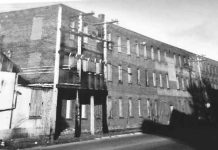The question had become, “How many Deam oaks are there?” But I was also asking myself, “How many people care?” I am referring to the Charles Deam oak and the lengthy treatise in the N-B today. It all started a couple months ago when Wells County’s newly titled and official Tourism Coordinator — Audry Dudley…



